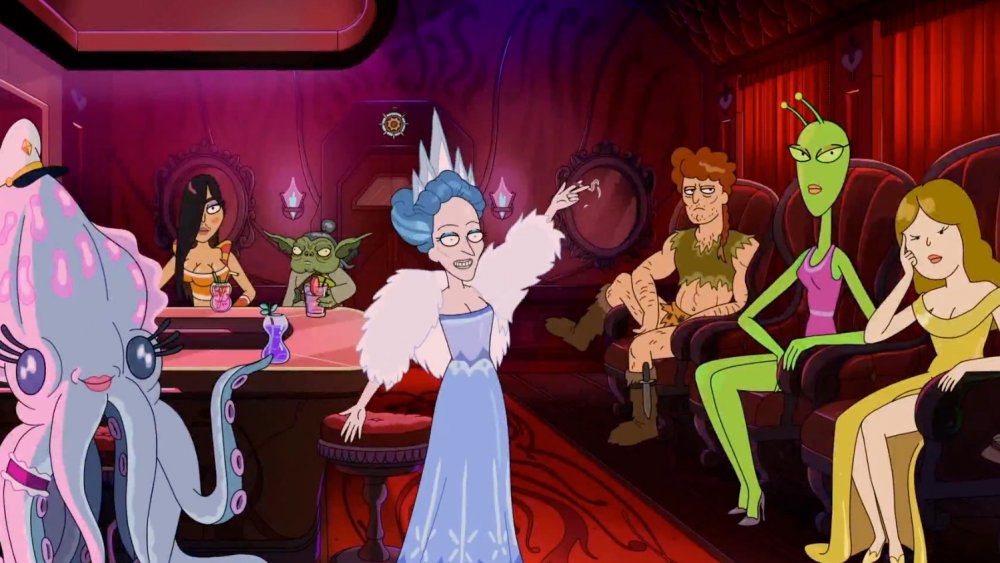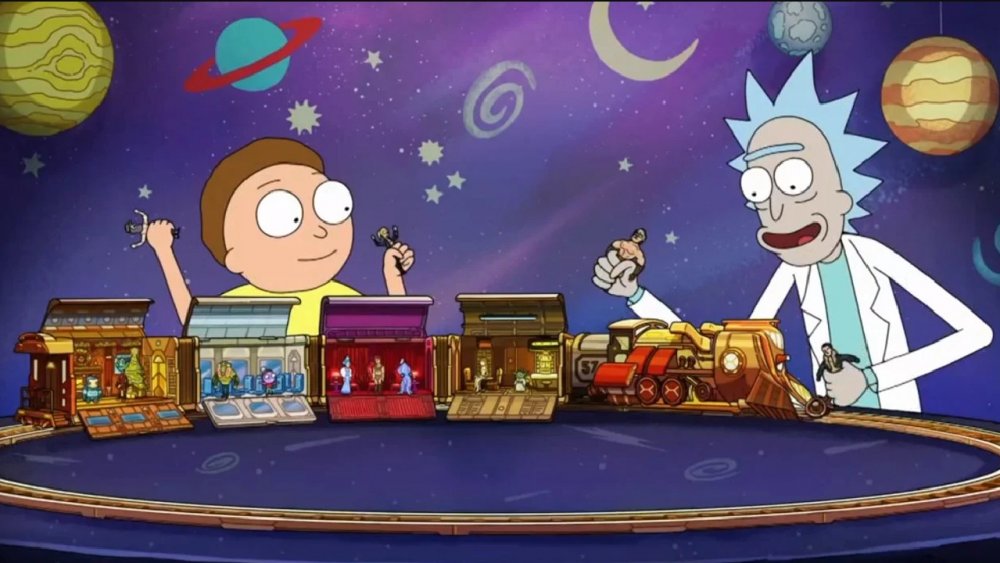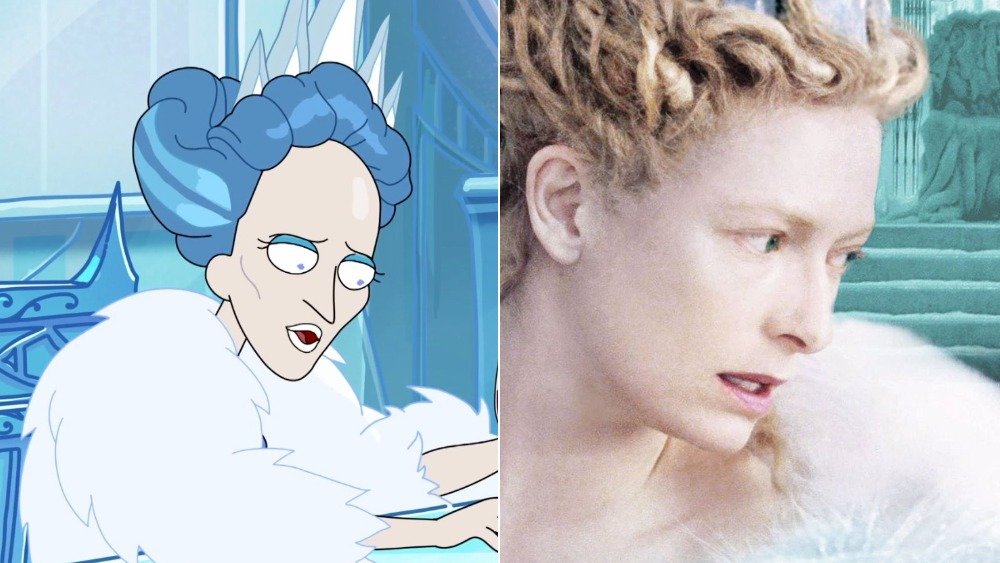The Rick And Morty Actress Reference You Missed On The Story Train
No matter how closely you watched the most recent episode of Adult Swim's Rick and Morty, there's just no way any mortal person could catch each and every insane reference. The internal logic of the Story Train forbids it.
Last Sunday night, Rick and Morty portaled back into our version of Earth to drop the much anticipated sixth episode of season 4, and man, was it a weird one. The episode, unhelpfully entitled "Never Ricking Morty," drops viewers in medias res into Rick and Morty's confusing adventure on the Story Train, a literal storytelling device ultimately revealed to be a piece of Citadel merchandise.
For fans who thought season 4 may have already pushed the highbrow sci-fi comedy as far as possible with clingy sex dragons and snake jazz, co-creators Dan Harmon and Justin Roiland cooked up something special with this one. The Story Train presented a kind of dadaist collage of sci-fi tropes and esoteric story motifs. At times, it felt less like a cohesive episode and more like watching Comic-Con throw up. Don't worry, it all had a purpose – sort of.
Rick and Morty's Story Train weaves an abstract tapestry of non-sequitur plot threads
"Never Ricking Morty" dropped an anthology episode on viewers and heroes alike without issuing the standard warning. Unlike past anthology episodes, the Story Train dealt out quick scenes connected neither by a central premise nor unity of effect, but rather by obscure thematic symmetries and non-sequitur allusions.
Around the midway point of any season of Rick and Morty, the creators like to throw in a clip show (of sorts) built from short-form story vignettes. For the first two seasons, the framing device for delivering these vignettes was interdimensional cable. On season 3, Rick and Morty cut the cord and explored Morty's excised memories, instead, in a classic episode entitled "Morty's Mind Blowers." Lest their intentions go unnoticed, Rick (voiced by Roiland) actually breaks the fourth wall at the outset of the episode to tell the audience, "We're going to be doing this instead of interdimensional cable."
Last week's episode contained a similar offhand reference to the OG clip show format. While Rick raged against the contrivance of the Story Train, he pointed out that, if they wanted to do an anthology episode they would have "just done interdimensional cable!"
It's a good thing Harmon and Roiland didn't really give their characters a choice, because "Never Ricking Morty" turned out to be a pretty rewarding watch for viewers interested in storycraft or tickled by the challenge of identifying all the references. The guest appearance of one White Witch of Winter while Rick and Morty attempted to escape the narrative labyrinth of the Story Train was perhaps the perfect example of this episode's chicanery.
Tilda Swinton is the key in Rick and Morty season 4 episode 6
Viewers may have noticed that this animated character bore a striking resemblance to the actress Tilda Swinton. As one Reddit user aptly pointed out, based on the embedded references at play, that resemblance is likely intentional. Swinton, whose resume includes quite a few science-fiction projects, was the actress tapped most recently to play the evil White Witch in The Lion, The Witch and the Wardrobe. Because one reference isn't ever enough for the creatively acrobatic Harmon, it should also be noted that Swinton played a villain in another sci-fi train story, 2013's Snowpiercer.
While we first get a glimpse of the animated White Witch smoking a cigarette and casually enjoying the convivial atmosphere on the Story Train, Rick and Morty are later transported into a more explicit vignette, in which we see the Swinton Witch holding court in a frozen palace reminiscent of the winter-bound Narnia from The Lion, The Witch and The Wardrobe.
There's probably a dissertation's worth of literary allusions and cinematic sight gags thrown into this animated maelstrom. Trying to unify them all into a cohesive story is a fool's errand, but it's also not the point. Harmon and Roiland are having a little fun, here, at the expense of storytelling as a craft. As most writers will tell you, stories are supposed to follow a set of flexible rules in order to tell a satisfying tale. The format of the Story Train deliberately eschews these hackneyed notions of what does and doesn't constitute a good story, instead relying on references and meta-thematics, but it turns out no less satisfying for it.


